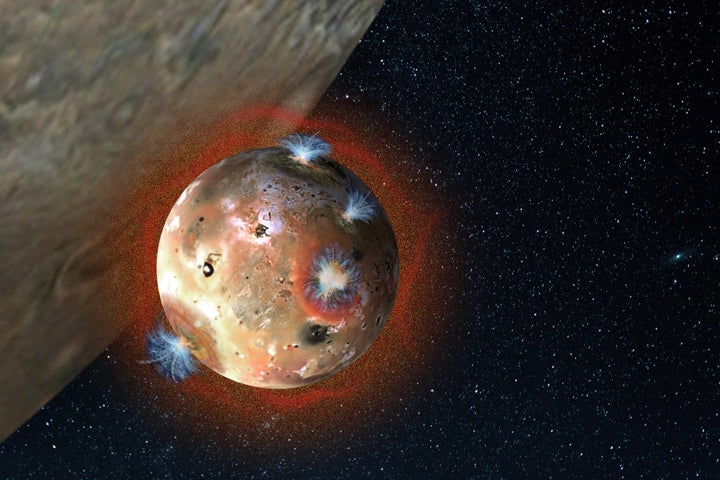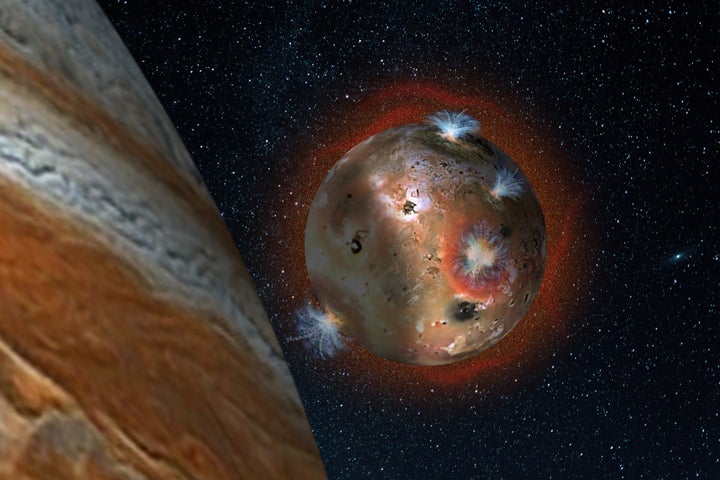It takes Earth’s atmosphere decades to recover from damage. But for Jupiter’s volcanic moon Io, the destruction and reconstruction of its gaseous bubble is a daily occurrence.
When Jupiter shades Io from the sun, its thin atmosphere of sulphur dioxide freezes on to its surface as frost. Once the moon moves out of the eclipse, the ice warms and the volcanic gas rebuilds the atmosphere.
“This research is the first time scientists have observed this phenomenon directly, improving our understanding of this geologically active moon,” said Tsang, a senior research scientist in Southwest Research Institute’s Space Science and Engineering Division.
The study shows that Io’s atmosphere starts deflating when the temperatures drop from -235 degrees Fahreneit in sunlight to -270 degrees Fahrenheit during the eclipse, which occurs for two hours during each Io day (1.7 Earth days).
“This confirms that Io’s atmosphere is in a constant state of collapse and repair, and shows that a large fraction of the atmosphere is supported by sublimation of SO ice,” said John Spencer, an SwRI scientist who also participated in the study.
“Though Io’s hyperactive volcanoes are the ultimate source of the SO, sunlight controls the atmospheric pressure on a daily basis by controlling the temperature of the ice on the surface. We’ve long suspected this, but can finally watch it happen.”
Astronomers had previously struggled to directly observe Io’s atmosphere, which is often obscured by Jupiter’s shadow. But in this research, scientists monitored heat radiation rather than sunlight to determine the state of its atmosphere.
The findings were published in the Journal of Geophysical Research.

An artist’s rendering depicts Io’s volcanic plumes creating the atmosphere in sunlight.

Each day, Io is eclipsed by Jupiter for two hours. The temperature drop freezes sulphur dioxide (SO2) gas, triggering the atmosphere’s deflation.

Io is shown here in full eclipse, during which its atmosphere “collapses” as SO gas becomes frost on the moon’s surface. The atmosphere reforms once it emerges from Jupiter’s shades.
